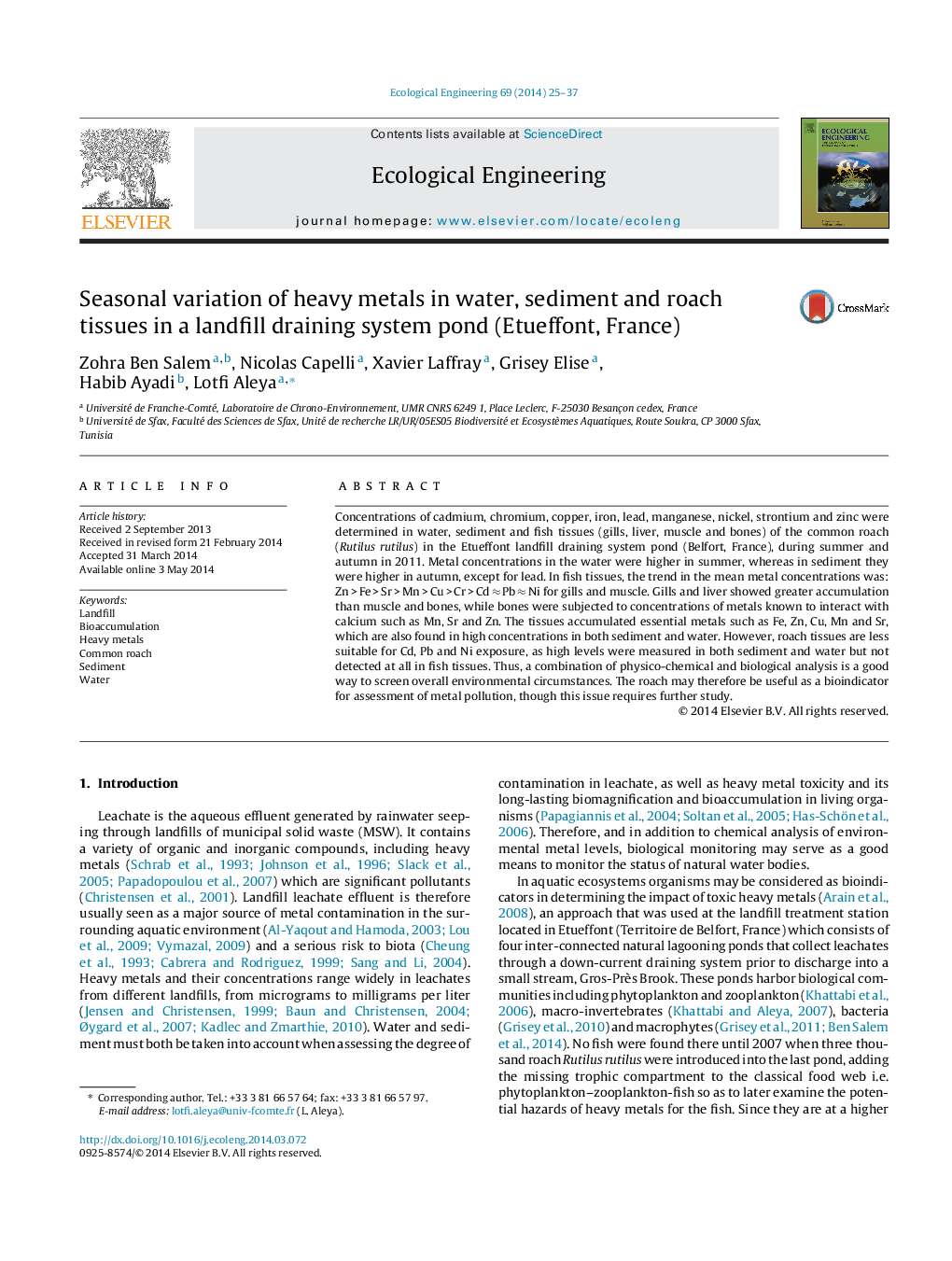| Article ID | Journal | Published Year | Pages | File Type |
|---|---|---|---|---|
| 4389371 | Ecological Engineering | 2014 | 13 Pages |
•Investigation of bioaccumulation of heavy metals in tissues of Rutilus rutilus.•Metal distribution patterns among tissues differed between the two seasons.•Liver and gill accumulated more metals than muscles.•Roach might be a good bioindicator for assessment of some metal contamination.
Concentrations of cadmium, chromium, copper, iron, lead, manganese, nickel, strontium and zinc were determined in water, sediment and fish tissues (gills, liver, muscle and bones) of the common roach (Rutilus rutilus) in the Etueffont landfill draining system pond (Belfort, France), during summer and autumn in 2011. Metal concentrations in the water were higher in summer, whereas in sediment they were higher in autumn, except for lead. In fish tissues, the trend in the mean metal concentrations was: Zn > Fe > Sr > Mn > Cu > Cr > Cd ≈ Pb ≈ Ni for gills and muscle. Gills and liver showed greater accumulation than muscle and bones, while bones were subjected to concentrations of metals known to interact with calcium such as Mn, Sr and Zn. The tissues accumulated essential metals such as Fe, Zn, Cu, Mn and Sr, which are also found in high concentrations in both sediment and water. However, roach tissues are less suitable for Cd, Pb and Ni exposure, as high levels were measured in both sediment and water but not detected at all in fish tissues. Thus, a combination of physico-chemical and biological analysis is a good way to screen overall environmental circumstances. The roach may therefore be useful as a bioindicator for assessment of metal pollution, though this issue requires further study.
